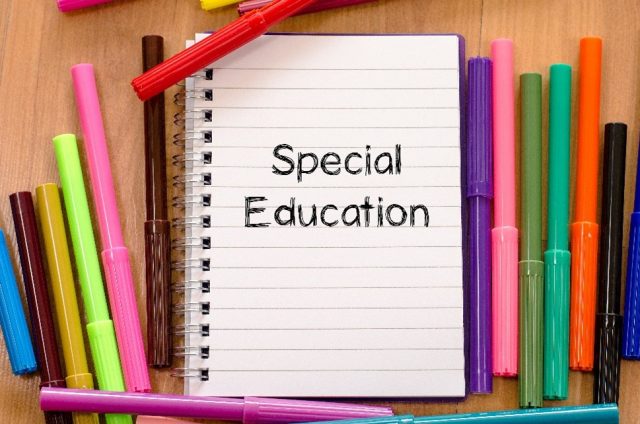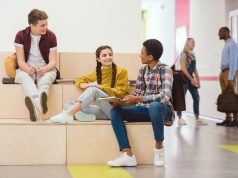Inclusive education is a progressive and empowering concept that seeks to ensure that every student, regardless of their abilities or disabilities, is given the opportunity to learn and grow in the same classroom environment, notes Dr. Dana Diab. It’s about creating a learning environment that is flexible, accommodating and responsive to the diverse needs of all learners, thereby promoting equity, diversity, and inclusion in the education system.
The idea behind inclusive education is to eliminate the barriers that prevent students with special needs from participating in mainstream classrooms, and to provide them with the necessary support and resources to enable them to thrive and succeed. Dr. Dana Diab notes this approach recognizes that every student has unique strengths, talents, and challenges, and that every student deserves to be treated with dignity, respect, and compassion.
In practice, inclusive education involves adapting and modifying traditional educational frameworks to meet the needs of all learners, including those with disabilities, learning difficulties, and behavioral challenges. It requires a collaborative and multidisciplinary approach that involves teachers, parents, caregivers, and other professionals working together to create a learning environment that is safe, supportive, and engaging.
Despite its many benefits, inclusive education also presents certain challenges, including the need for additional resources, training, and support for teachers and other educators. However, the benefits of inclusive education far outweigh the challenges, as it promotes greater understanding, respect, and empathy among students, and helps to build a more inclusive and equitable society overall. In this article from Dr. Dana Diab, we explore some of the most effective strategies for integrating special needs students into mainstream classrooms, and highlight the benefits and challenges of this approach.
Dr. Dana Diab on Understanding Inclusive Education
Inclusive education is a holistic approach to providing education that focuses on creating a supportive and welcoming environment for all students, regardless of their capabilities, backgrounds, and needs. It goes beyond merely placing special needs students in mainstream classrooms and involves fundamental changes to the classroom environment to ensure that every student has an equal opportunity to learn, participate, and succeed.
The key to inclusive education is recognizing and understanding the unique needs of each student and providing the appropriate support to meet those needs. This can include personalized instruction, assistive technology, and accommodations for physical and sensory impairments. It also involves creating a culture of respect and understanding for diversity, where every student is valued and their individual perspectives and experiences are recognized and celebrated.
Inclusive education is not only beneficial for special needs students but for all students. It promotes empathy, understanding, and acceptance, and helps to create a more inclusive and welcoming society. By embracing inclusive education, we can ensure that every student has the opportunity to reach their full potential and contribute to society in meaningful ways.
Dr. Dana Diab on Collaboration and Team Planning
Achieving successful inclusion within an educational setting is a process that requires a strong and collaborative approach. Teachers, special education professionals, and support staff must work closely together to design and implement effective teaching strategies that cater to the individual needs of each student. This involves regular team meetings where members discuss progress, identify areas of improvement, and make modifications to teaching plans as necessary. By working together, the team can ensure that students with diverse learning needs receive the support they need to thrive in their academic pursuits. This collaborative approach also helps to foster a sense of community and belonging among students, which can have a positive impact on their social and emotional well-being.
Dr. Dana Diab on Individualized Education Plans (IEPs)
For special needs students, it is important to have an Individualized Education Plan (IEP) that is tailored to their unique needs and abilities. An IEP is a comprehensive document that outlines specific goals, accommodations, and interventions that will help the student succeed academically and socially. These plans should be developed collaboratively with input from a variety of parties, including teachers, parents, special educators, and, when appropriate, the students themselves.
During the development of the IEP, the needs of the student are assessed to determine what goals and objectives should be included. The IEP should include specific academic and social goals, as well as any accommodations or interventions necessary to help the student achieve those goals. Accommodations might include things like extended time for assignments or tests, the use of assistive technology, or preferential seating in the classroom. Interventions might include additional tutoring or behavioral support.
Once the IEP is developed, it is important to ensure that it remains relevant and effective. Regular reviews and adjustments to the IEP are necessary to ensure that the student is making progress towards their goals and that the accommodations and interventions are meeting their needs. Teachers, parents, and special educators should work together to monitor the student’s progress, adjust the IEP as necessary, and provide additional support as needed. By working collaboratively and reviewing the IEP regularly, special needs students can receive the education and support they need to succeed.
Dr. Dana Diab on Differentiated Instruction
In an inclusive classroom, differentiated instruction plays a crucial role in facilitating effective learning for all students. This approach involves making modifications to teaching methods and materials to cater to the diverse learning styles and abilities of each student. By catering to individual needs, educators can create an environment that is engaging and supportive for all students, irrespective of their unique learning requirements.
To achieve this, teachers can use a variety of techniques to differentiate their instruction. These techniques can include varied instructional formats such as group work, hands-on activities, and visual aids, which are customized to the learning style of individual students. For instance, some students may respond better to visual aids, while others may learn more effectively through hands-on activities. By incorporating different formats, teachers can ensure that all students are engaged and that their learning needs are being met.
Another important aspect of differentiated instruction is differentiating homework. Providing students with homework that is tailored to their individual learning needs is an effective way to reinforce classroom learning. Teachers can provide different homework tasks that cater to different learning styles and abilities, ensuring that each student has the opportunity to succeed.
Using adaptive technology is another important technique for differentiated instruction. Adaptive technology can be customized to meet the specific needs of each student, such as providing audio versions of text for students with visual impairments or text-to-speech software for students with reading difficulties.
Dr. Dana Diab on Building an Inclusive Classroom Culture
Establishing a classroom environment that acknowledges and honors the diversity of all students is an essential component of fostering a positive learning experience. Teachers can create such an environment by promoting inclusivity and encouraging students to develop an understanding and appreciation of each other’s unique backgrounds and experiences. This can be achieved through various means, including engaging in class discussions on topics related to diversity, implementing empathy-building activities, and empowering students to design and implement projects that celebrate inclusivity.
In order to ensure that the classroom culture is truly inclusive, it is important for teachers to model inclusive language and behavior. This includes using gender-neutral pronouns, avoiding stereotypes, and respecting all students’ identities and backgrounds. Furthermore, teachers should encourage students to do the same by establishing classroom rules that prioritize respect, tolerance, and empathy. By creating a safe and welcoming environment where all students feel valued and accepted, teachers can promote positive relationships among students and facilitate their academic and personal growth.
Dr. Dana Diab on Professional Development for Teachers
As an educator, it is essential to be equipped with the necessary skills and knowledge to provide quality education to all students, including those with disabilities. Continuous professional development is crucial in ensuring that teachers are well-prepared to meet the diverse needs of students in an inclusive classroom.
Professional development should cover a wide range of topics, including but not limited to, specific disabilities such as visual, hearing, and motor impairments, and learning disabilities. It should also focus on effective instructional strategies that cater to the needs of all students, regardless of their learning styles and abilities. Classroom management techniques are equally important, and teachers should receive training on how to create a positive and supportive learning environment.
Furthermore, teachers must be familiar with assistive technologies that can enhance the learning experience for students with disabilities. Assistive technologies such as text-to-speech software, screen readers, and speech recognition software can help students participate in classroom activities and access learning materials more effectively.
Ongoing professional development is a critical component of teaching in an inclusive classroom. It ensures that teachers stay up-to-date with the latest teaching practices and technologies, and are equipped with the necessary skills to provide quality education to all students, regardless of their abilities or disabilities.
Dr. Dana Diab on Peer Support and Buddy Systems
Inclusive classrooms are designed to cater to the diverse learning needs of students with varying abilities, backgrounds, and learning styles. These classrooms often benefit from peer support systems, where students are encouraged to help each other. Peer support systems create a conducive learning environment where students can develop social and interpersonal skills while also enhancing their academic performance. Buddy systems, in particular, can be especially beneficial in inclusive classrooms, as they pair special needs students with classmates who can provide them with academic assistance, social skills training, and support with classroom routines. The buddy system promotes a sense of belonging and fosters positive relationships among students, which can lead to increased academic achievement and improved mental health outcomes.
Dr. Dana Diab on the Use of Assistive Technology
In an inclusive classroom, assistive technology can make a significant difference by providing students with special needs access to the curriculum and enabling them to participate fully in classroom activities. These technologies include speech-to-text software, which allows students to verbally dictate their thoughts and ideas, and audiobooks that help them comprehend and engage with the subject matter. Additionally, specialized keyboards and communication devices can help students with physical disabilities communicate more effectively with their teachers and peers. These assistive technologies can level the playing field for students with special needs, allowing them to thrive and succeed in a classroom environment that is supportive, inclusive, and empowering.
Dr. Dana Diab on the Flexible Classroom Environment
The physical layout of the classroom should be adaptable to meet the needs of all students. This may include arranging desks to accommodate wheelchairs, creating quiet areas for students who need a break from sensory stimulation, or having resources readily available for various needs.
Dr. Dana Diab on Parental Involvement and Communication
Effective communication with parents of special needs students is crucial for creating a supportive and inclusive learning environment. Regular communication between the school and parents can provide valuable insights into a child’s individual needs, abilities, and behaviors. By keeping parents informed about classroom activities and their child’s progress, teachers can build a collaborative partnership with families and promote their active involvement in their child’s education. This not only helps parents better understand their child’s learning experience but also strengthens the home-school connection, which is essential for promoting positive outcomes for children with special needs. Additionally, regular communication with parents can also enhance their trust and confidence in teachers, leading to better collaboration and more successful outcomes for students.
Dr. Dana Diab on Monitoring and Evaluation
Regular monitoring and evaluation of inclusive practices in the classroom are important. This involves assessing both the academic progress and the social-emotional well-being of all students, and making necessary adjustments to teaching methods and support.
Integrating special needs students into mainstream classrooms through inclusive education is a journey that requires commitment, patience, and creativity. While it poses certain challenges, the benefits of such an environment for all students are immense. Inclusive classrooms not only provide equitable educational opportunities but also teach invaluable lessons in empathy, diversity, and resilience. By employing these strategies, educators can create a learning environment where every student, regardless of their abilities, feels valued and empowered to reach their full potential.









